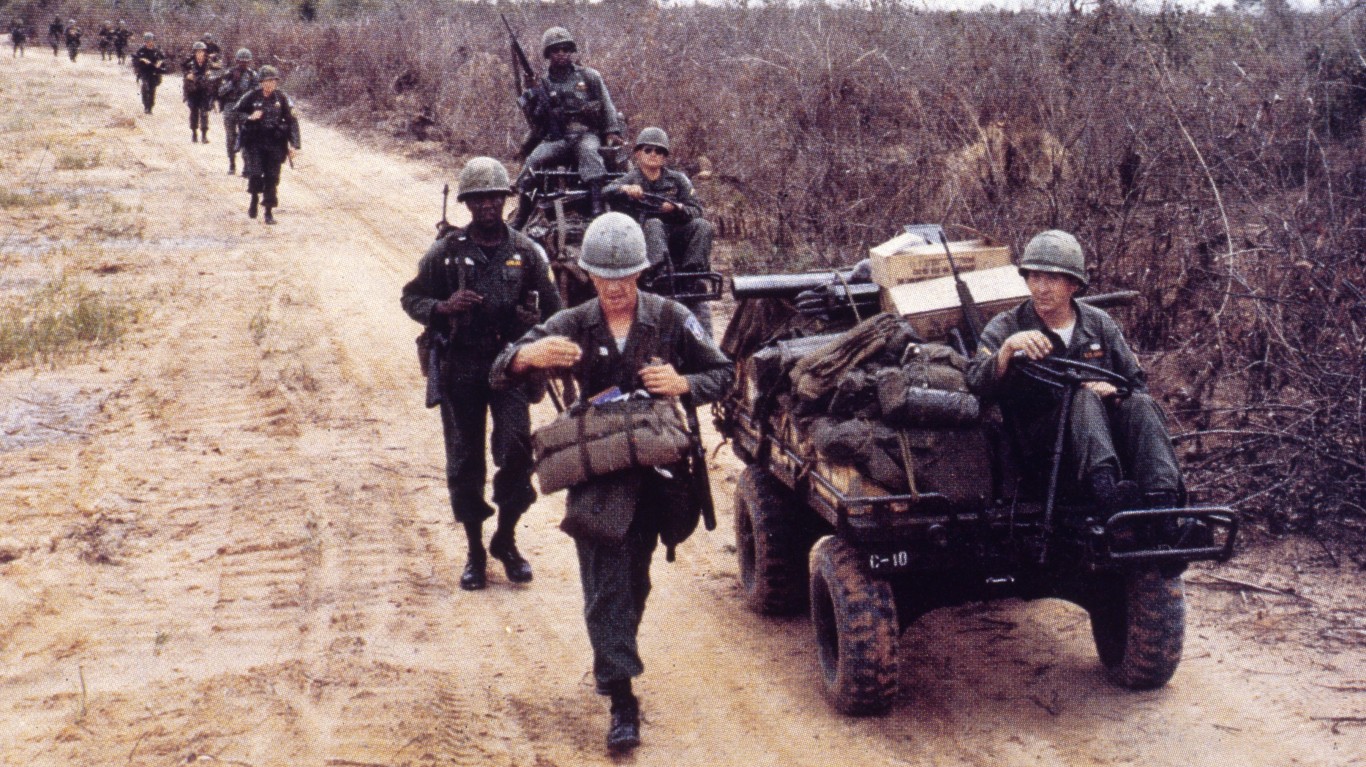
The Vietnam War is largely remembered as the most brutal war of the 1960s. Indeed, the prolonged armed conflict resulted in over 1 million casualties between 1965 and 1975. (Here are 29 horrifying images of the Vietnam War.)
Dozens of other countries, however, were also embroiled in war during that decade, leading to over a million battle-related deaths around the globe. To identify the biggest wars of the 1960s, 24/7 Wall St. reviewed the PRIO Battledeaths Dataset, produced by the Peace Research Institute Oslo, an independent conflict research and policy institute. We listed the 21 conflicts that began, but did not necessarily end, in the 1960s and during which at least 1,000 combat deaths occurred. (In the majority of cases, the death total listed is the PRIO best estimate. In the case of five wars on this list, 24/7 Wall St. averaged the high and low estimate provided by PRIO.)
The Vietnam war had its roots in an anticolonial uprising against French rule, and likewise, many of the wars of the ‘60s began as countries freed themselves from European imperialism. The majority of the biggest wars took place in Africa, with a number being struggles to gain independence from Portugal, including wars in Angola, Mozambique, and Guinea-Bissau.
Other major conflicts in Africa were civil wars that followed the withdrawal of European powers, including wars in Eritrea, Chad, and the Congo. The end of colonial rule in these countries often meant an abrupt withdrawal of governmental oversight – with minimal preparations or infrastructure that would allow for a harmonious transition to self-governance – leading to factional power struggles and civil wars.
Middle-Eastern wars that began in the ‘60s include the Iraqi-Kurdish conflict and the Six-Day War between Israel and an Arab coalition that included Egypt, Syria, and Jordan. In the Americas, bloody wars took place in Columbia, the Dominican Republic, and Central America between Honduras and El Salvador. (Here are the most devastating battles in recent history.)
Click here to see the biggest wars of the 1960s.
Click here to see our detailed methodology.
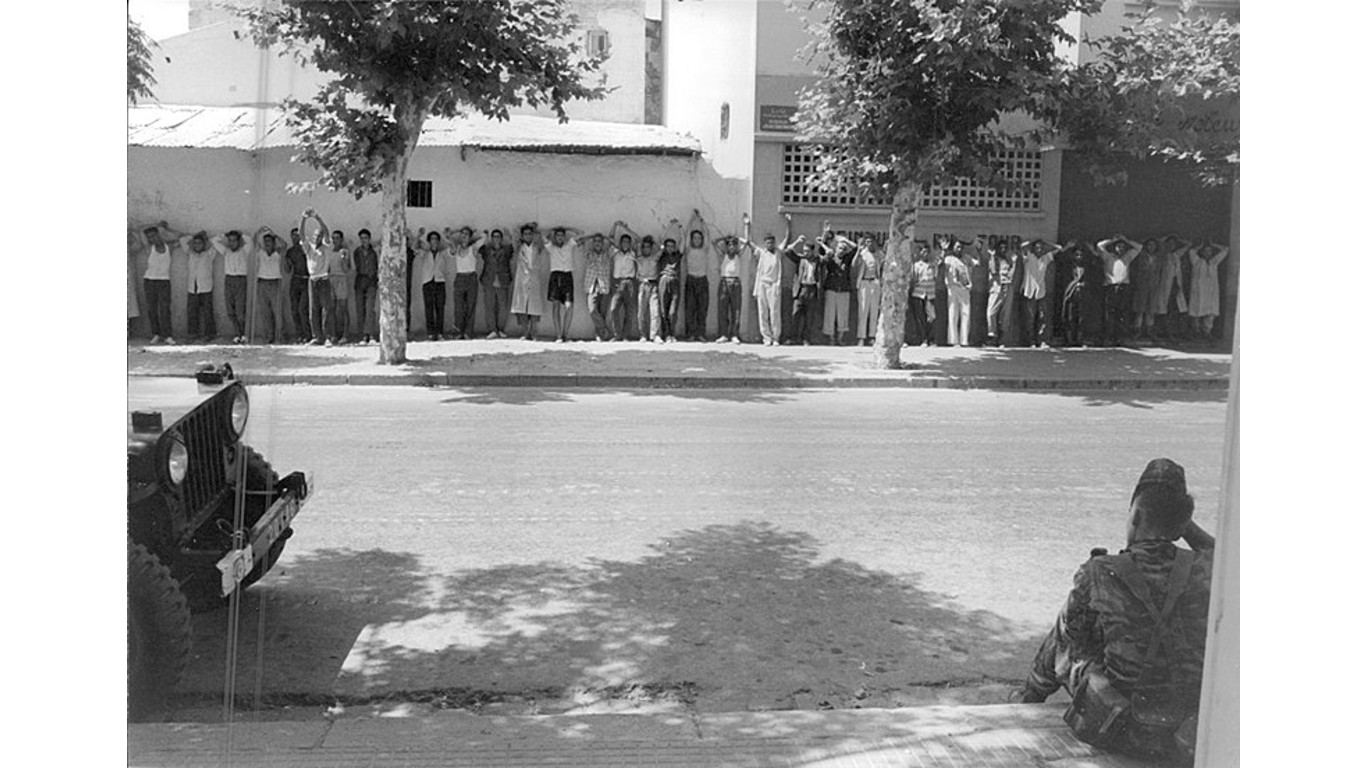
21. The Bizerte Crisis
> Estimated battle deaths: 1,394 est. (low: 1,000 – high: 1,394)
> Combatants: Tunisia vs. France
> Contested territory: Bizerte
> Time frame of active combat: 7/20/1961 to 7/22/1961
[in-text-ad]

20. The Mizo Uprising
> Estimated battle deaths: 1,500 est. (low: 75 – high: 2,997)
> Combatants: India vs. Mizo National Front
> Contested territory: Mizoram
> Time frame of active combat: 9/1/1966 to 12/31/1968

19. The Football War
> Estimated battle deaths: 2,107 est. (low: 206 – high: 5,000)
> Combatants: El Salvador vs. Honduras
> Contested territory: Common border
> Time frame of active combat: 7/3/1969 to 7/18/1969

18. French Conflict With the OAS
> Estimated battle deaths: 2,360 est. (low: 2,000 – high: 12,000)
> Combatants: France vs. OAS (Organisation armée secrète)
> Contested territory: Algeria
> Time frame of active combat: 4/22/1961 to 6/30/1962
[in-text-ad-2]
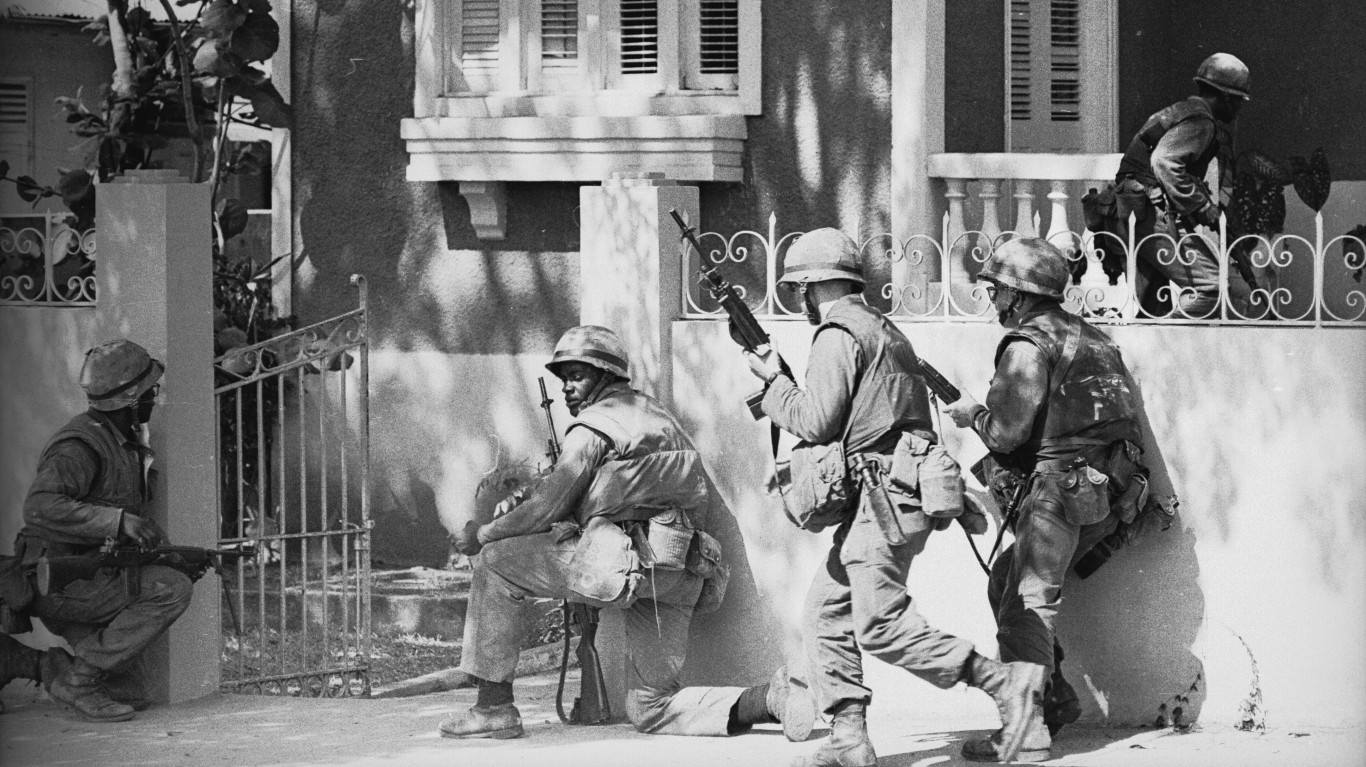
17. The Dominican Civil War
> Estimated battle deaths: 4,027 est. (low: 877 – high: 4,027)
> Combatants: Dominican Republic vs. Military faction
> Contested territory: Dominican Republic
> Time frame of active combat: 4/24/1965 to 8/31/1965
16. The Papua conflict
> Estimated battle deaths: 4,504 est. (low: 3,100 – high: 18,500)
> Combatants: Indonesia vs. The Free Papua Movement
> Contested territory: West Papua
> Time frame of active combat: 7/28/1965 to 12/31/1978
[in-text-ad]
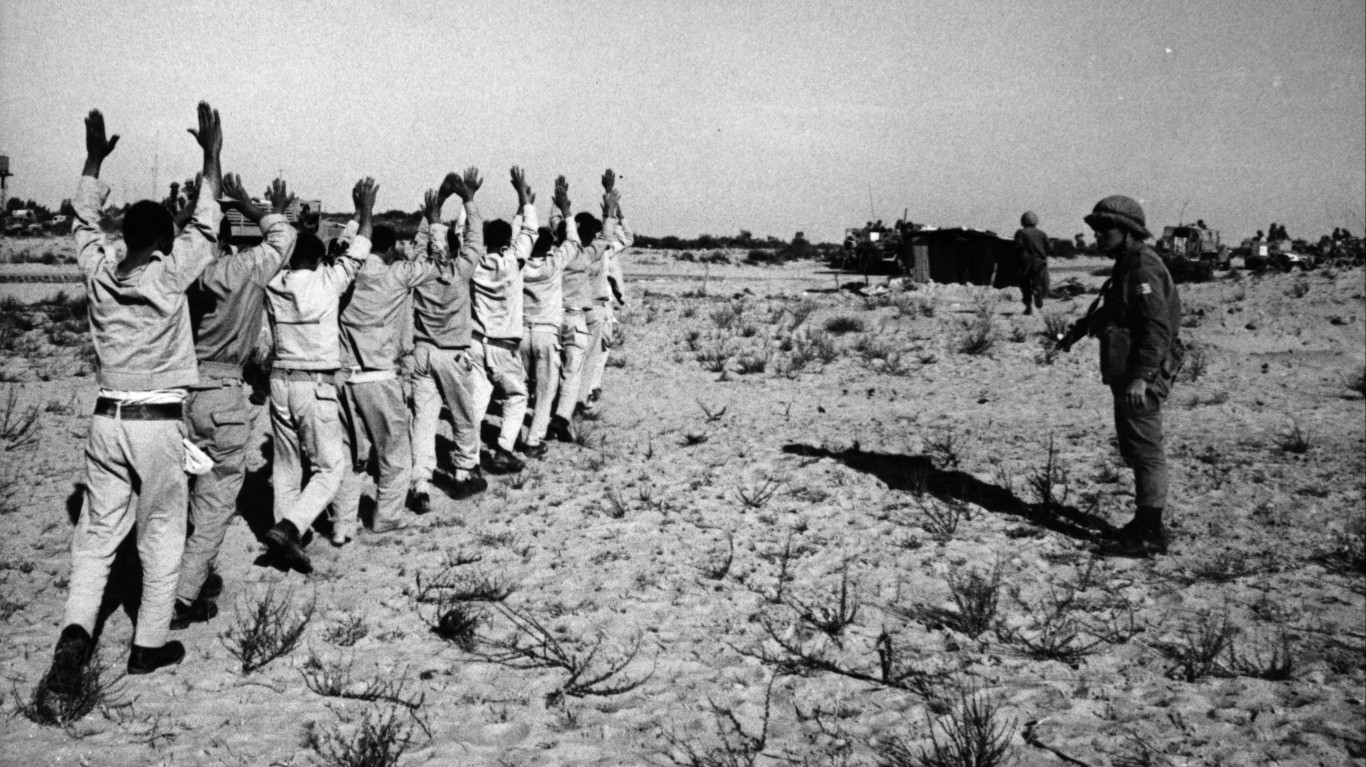
15. Six-Day War
> Estimated battle deaths: 5,413 est. (low: 5,197 – high: 14,313)
> Combatants: Israel vs. Egypt, Syria, Jordan
> Contested territory: Suez/Sinai
> Time frame of active combat: 6/5/1967 to 6/10/1967

14. Congo Crisis
> Estimated battle deaths: 6,492 est. (low: 6,492 – high: 94,006)
> Combatants: Democratic Republic of Congo (Zaire) vs. CNL
> Contested territory: Democratic Republic of Congo (Zaire)
> Time frame of active combat: 5/1/1964 to 12/31/1965
13. Chadian Civil War
> Estimated battle deaths: 10,577 est. (low: 5,536 – high: 17,108)
> Combatants: Chad vs. Frolinat, First Liberation Army, Second Liberation Army
> Contested territory: Chad
> Time frame of active combat: 7/1/1966 to 9/30/1972
[in-text-ad-2]
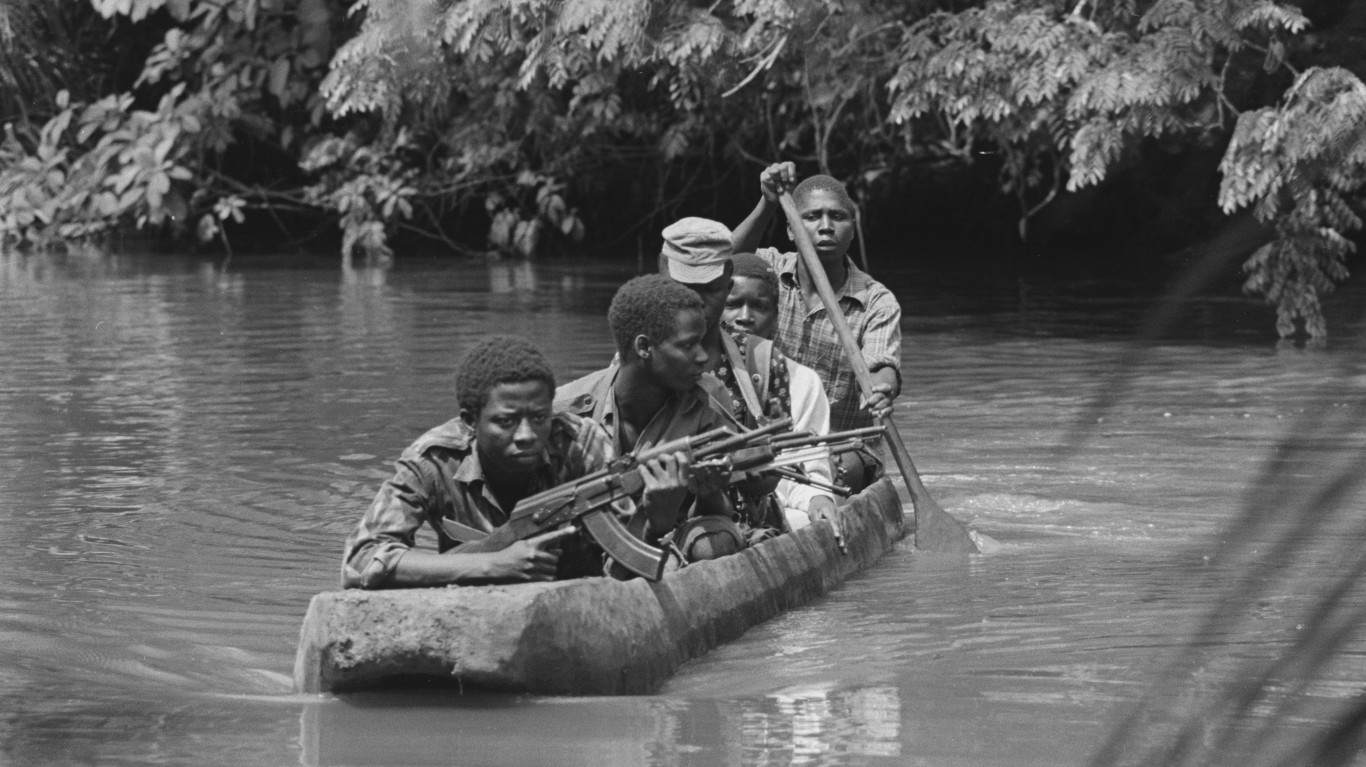
12. Guinea-Bissau War of Independence
> Estimated battle deaths: 15,000 est. (low: 1,200 – high: 15,000)
> Combatants: Portugal vs. PAIGC (African Party for the Independence of Guinea and Cape Verde)
> Contested territory: Guinea-Bissau
> Time frame of active combat: 2/1/1963 to 12/31/1973
11. South African Border War
> Estimated battle deaths: 17,500 est. (low: 10,000 – high: 25,000)
> Combatants: South Africa vs. SWAPO (South West Africa People’s Organisation)
> Contested territory: Namibia
> Time frame of active combat: 8/26/1966 to 12/22/1988
[in-text-ad]
10. The Zimbabwe Liberation Struggle
> Estimated battle deaths: 27,080 est. (low: 12,050 – high: 28,998)
> Combatants: Zimbabwe (Rhodesia) vs. ZANU (Zimbabwe African National Union), ZAPU (Zimbabwe African People’s Union)
> Contested territory: Zimbabwe
> Time frame of active combat: 9/7/1966 to 12/31/1968
9. Mozambican War of Independence
> Estimated battle deaths: 28,500 est. (low: 13,500 – high: 43,500)
> Combatants: Portugal vs. FRELIMO (Frente de Libertação de Moçambique)
> Contested territory: Mozambique
> Time frame of active combat: 11/19/1964 to 7/27/1974

8. First Sudanese Civil War
> Estimated battle deaths: 32,500 est. (low: 10,000 – high: 55,000)
> Combatants: Sudan vs. Anya-Nya
> Contested territory: Southern Sudan
> Time frame of active combat: 1/1/1963 to 1/31/1972
[in-text-ad-2]
7. The Colombian Conflict
> Estimated battle deaths (as of 2008): 39,768 est. (low: 14,065 – high: 45,041)
> Combatants: Colombia vs. EPL (Ejército Popular de Liberación), FARC (Fuerzas Armadas Revolucionarias de Colombia), others
> Contested territory: Colombia
> Time frame of active combat: 1/1/1964 to present
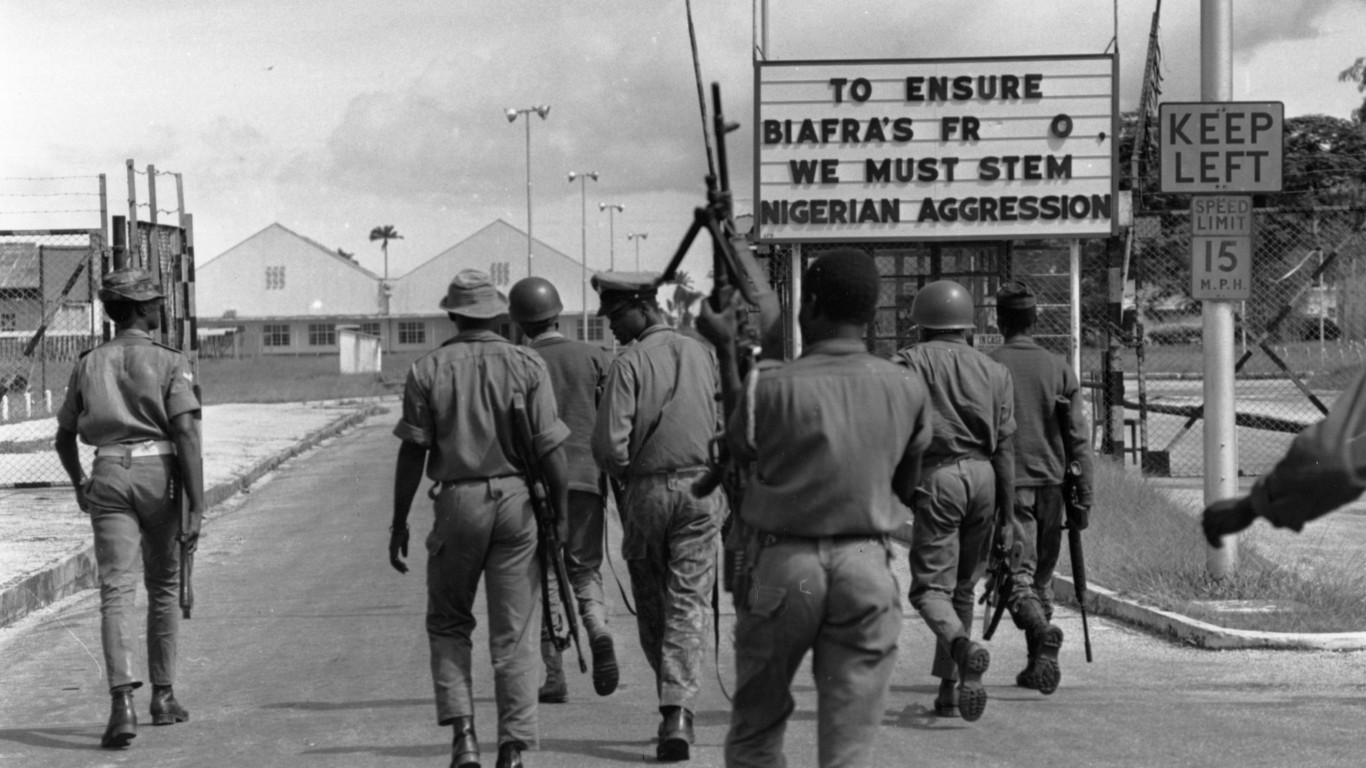
6. Nigerian Civil War
> Estimated battle deaths: 75,000 est. (low: 47,000 – high: 100,000)
> Combatants: Nigeria vs. Republic of Biafra
> Contested territory: Biafra
> Time frame of active combat: 7/6/1967 to 1/12/1970
[in-text-ad]

5. Angolan War of Independence Against Portugal
> Estimated battle deaths: 79,000 est. (low: 9,990 – high: 90,000)
> Combatants: Portugal vs. FNLA (Frente Nacional de Libertação de Angola), MPLA (Movimento Popular de Libertação de Angola), UNITA (União Nacional para a Independência Total de Angola)
> Contested territory: Angola
> Time frame of active combat: 2/4/1961 to 7/27/1974
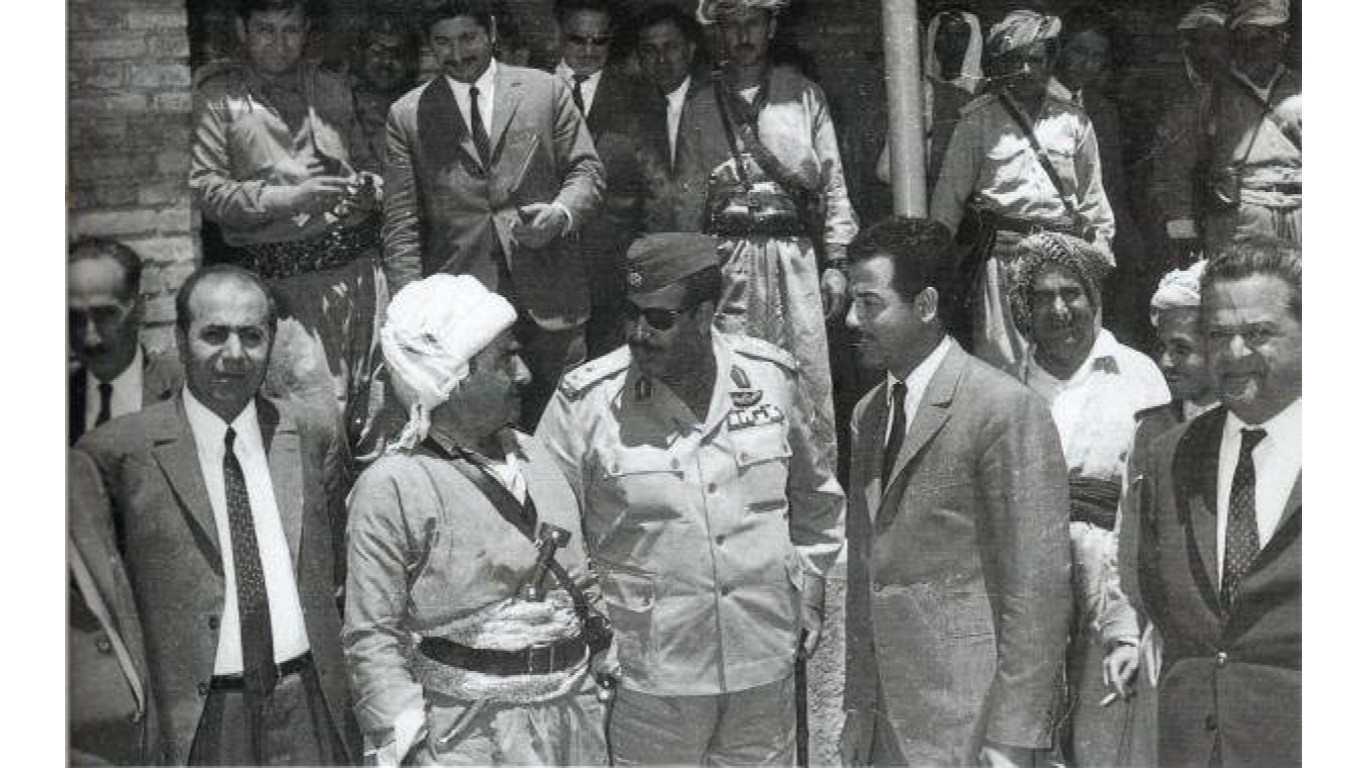
4. Iraqi–Kurdish conflict
> Estimated battle deaths: 211,334 est. (low: 25,625 – high: 397,043)
> Combatants: Iraq vs. KDP (Kurdistan Democratic Party), PUK (Patriotic Union of Kurdistan)
> Contested territory: Kurdistan
> Time frame of active combat: 12/1/1961 to 3/11/1970
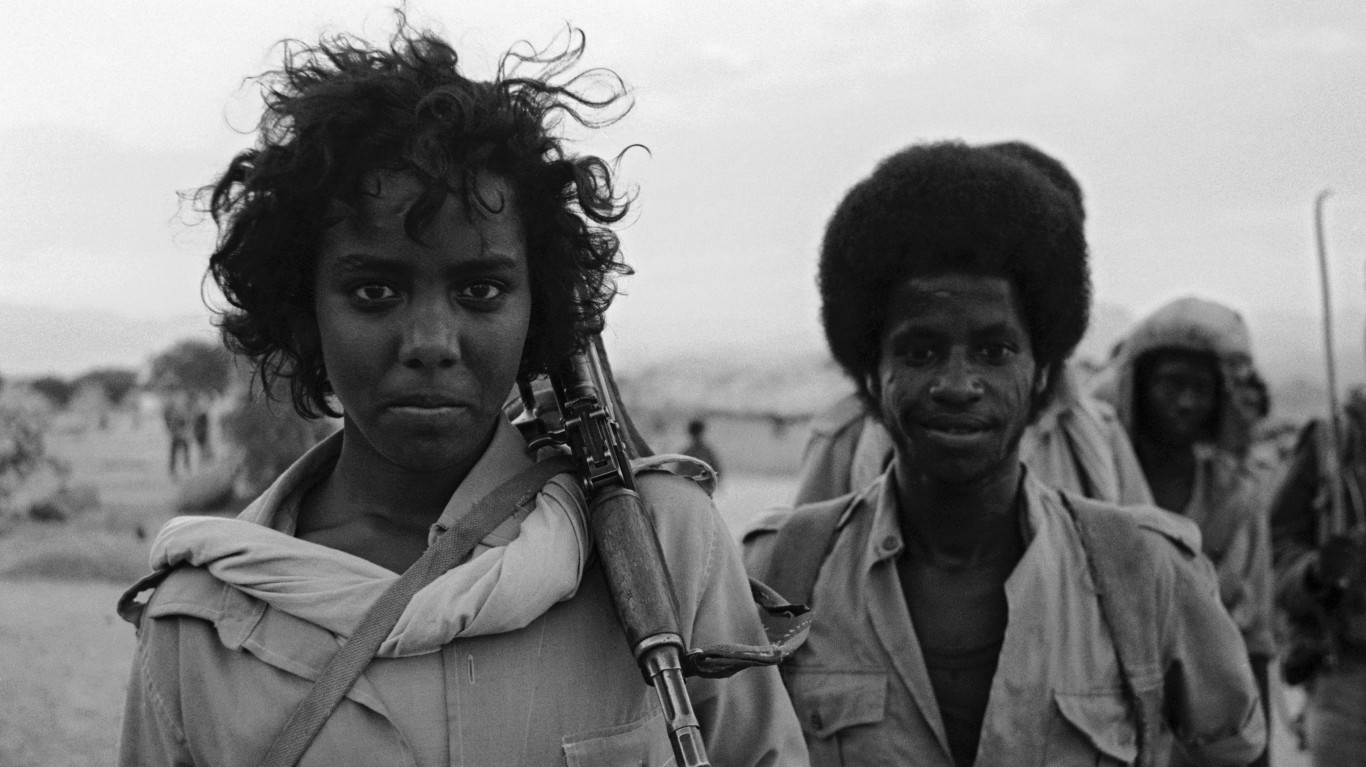
3. The Eritrean War of Independence
> Estimated battle deaths: 250,000 est. (low: 150,000 – high: 350,000)
> Combatants: Ethiopia vs. ELF (Eritrean Liberation Front), EPLF (Eritrean People’s Liberation Front), others
> Contested territory: Eritrea
> Time frame of active combat: 9/30/1961 to 5/28/1991
[in-text-ad-2]
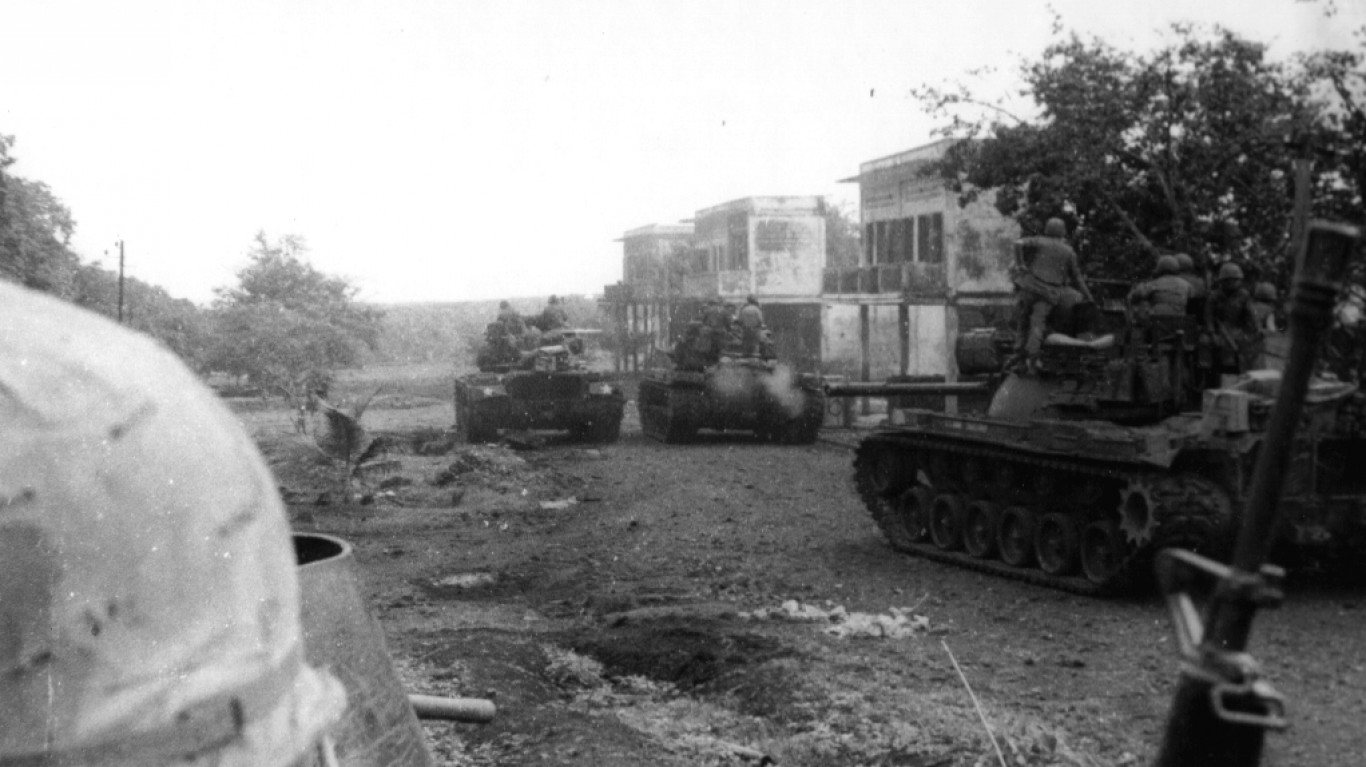
2. Cambodian Civil War
> Estimated battle deaths: 366,426 est. (low: 210,575 – high: 517,200)
> Combatants: Cambodia vs. Khmer Rouge
> Contested territory: Cambodia
> Time frame of active combat: 4/2/1967 to 4/17/1975

1. Vietnam War
> Estimated battle deaths: 1,461,050 est. (low: 1,134,053 – high: 4,635,527)
> Combatants: North Vietnam vs. South Vietnam, United States
> Contested territory: South Vietnam
> Time frame of active combat: 1/1/1965 to 4/30/1975
Methodology
To identify the deadliest wars of the 1960s, 24/7 Wall St. reviewed the PRIO Battledeaths Dataset, produced by the Peace Research Institute Oslo, an independent conflict research and policy institute. We listed the 21 conflicts which began in the 1960s and during which at least 1,000 combat deaths occurred. It should be noted that the conflict did not need to have ended within the decade to be considered. PRIO defines a conflict as “a contested incompatibility that concerns government and/or territory where the use of armed force between two parties, of which at least one is the government of a state, results in at least 25 battle-related (soldier and civilian) deaths in a calendar year.”
In the majority of cases, the death total listed is the official best estimate provided by PRIO. In the case of five wars on this list, 24/7 Wall St. averaged the high and low estimate provided by PRIO. It should be noted that the Colombian Conflict is still ongoing. The battle deaths listed for that conflict are through 2008. The dates listed also may not perfectly correspond with the official start or end of wars because the dates represent the start and end of combat. Some determinations for when a war actually begins depend on when various forces are involved. For example, PRIO classifies the Vietnam War as two distinct conflicts, with the second one beginning when U.S. troops entered combat in 1965.
Thank you for reading! Have some feedback for us?
Contact the 24/7 Wall St. editorial team.

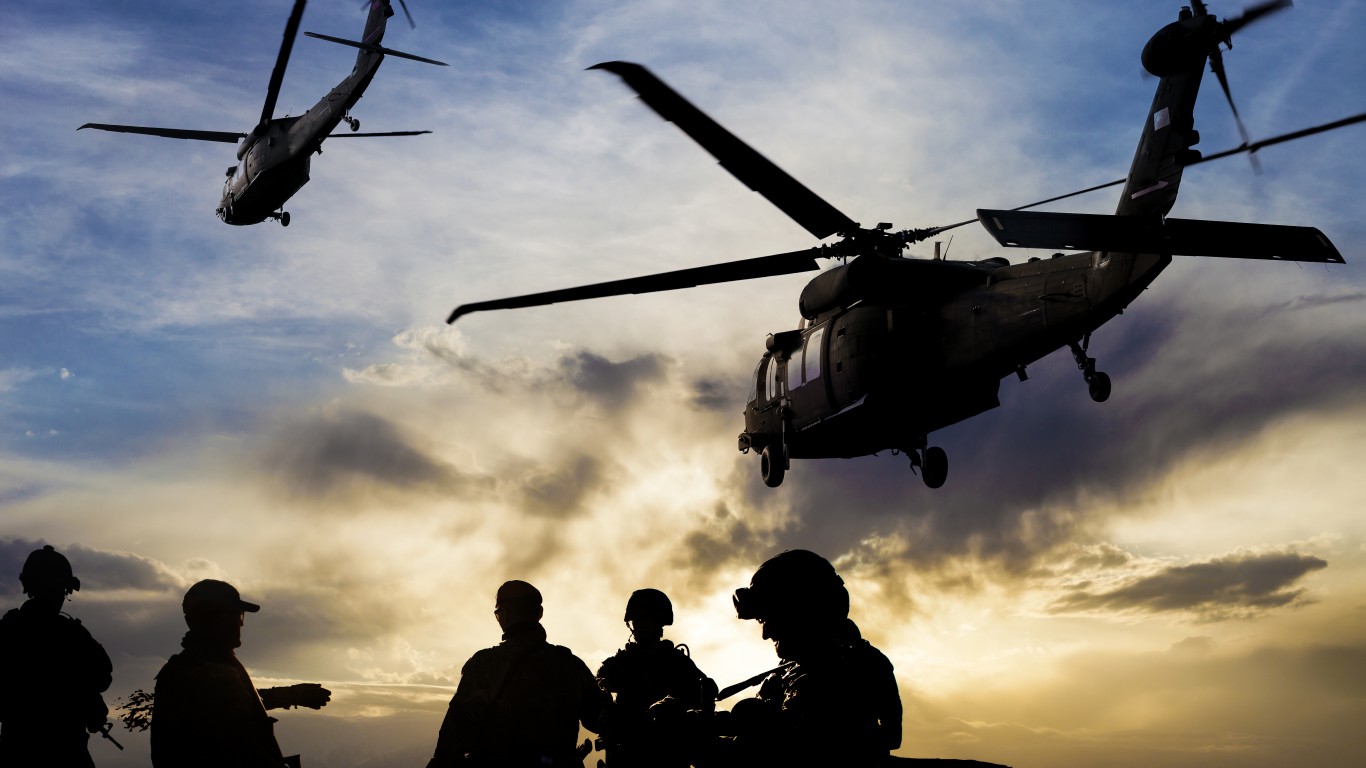 24/7 Wall St.
24/7 Wall St.
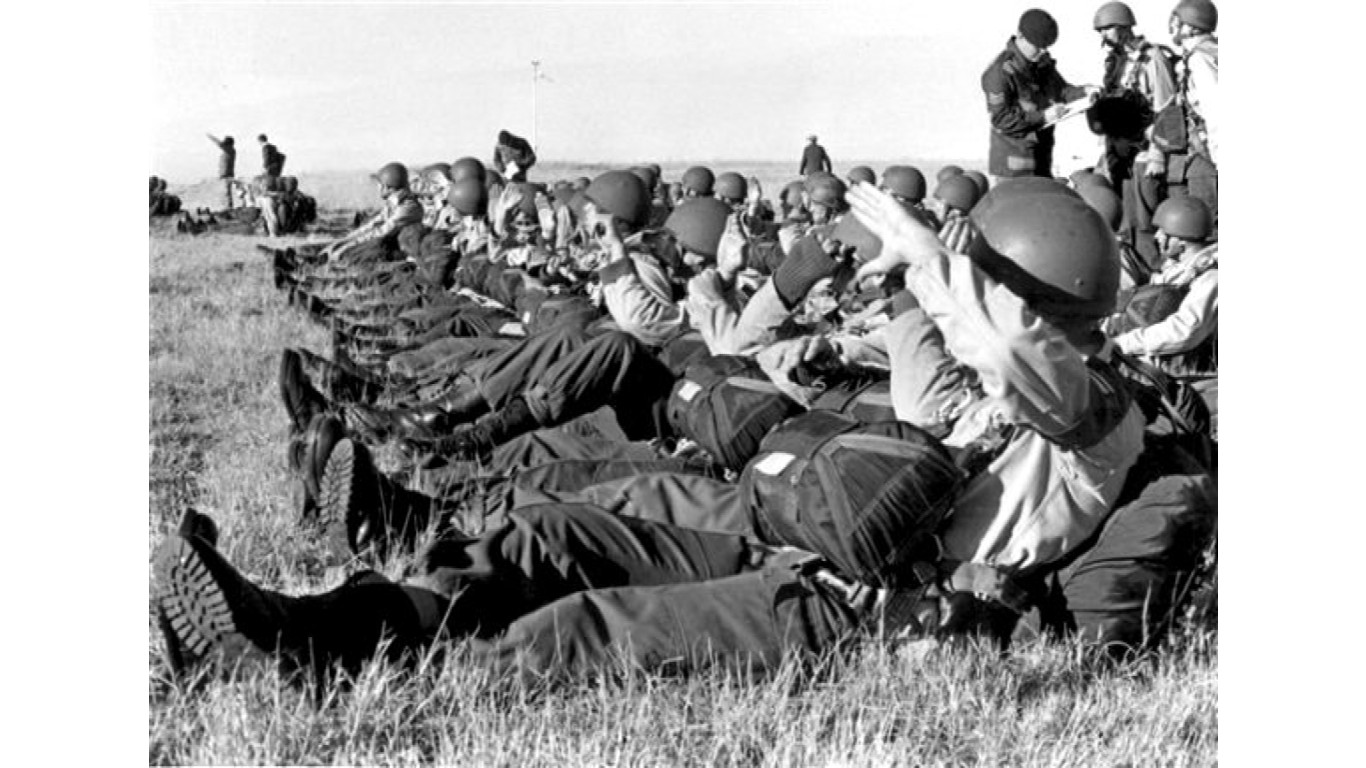
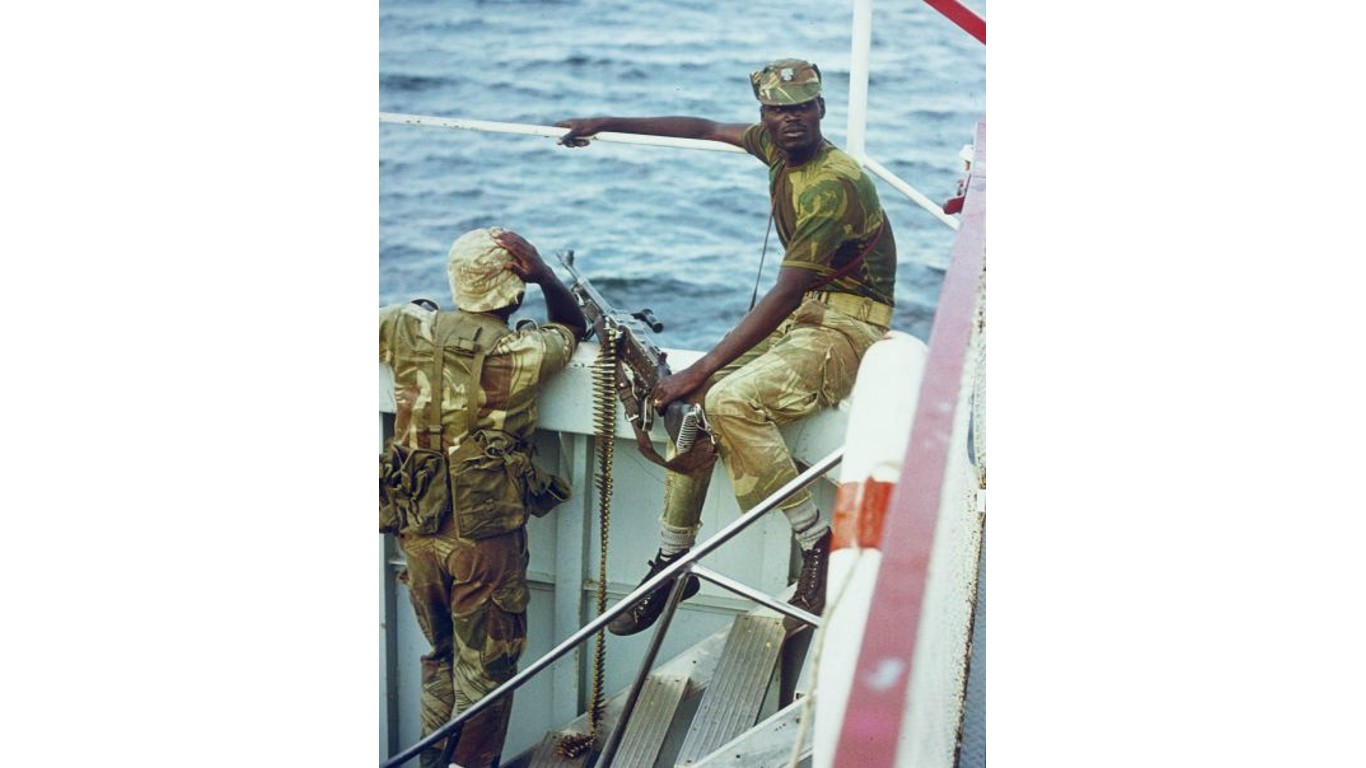
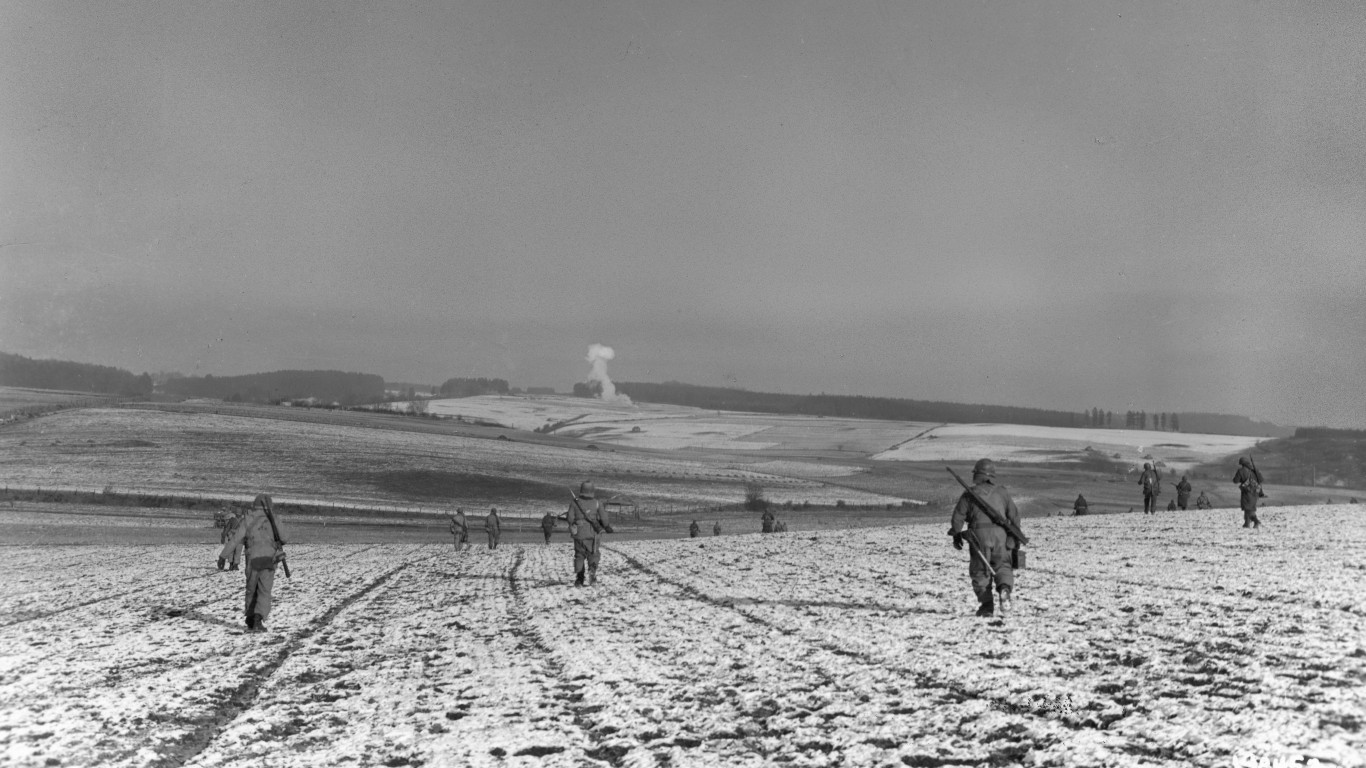 24/7 Wall St.
24/7 Wall St.

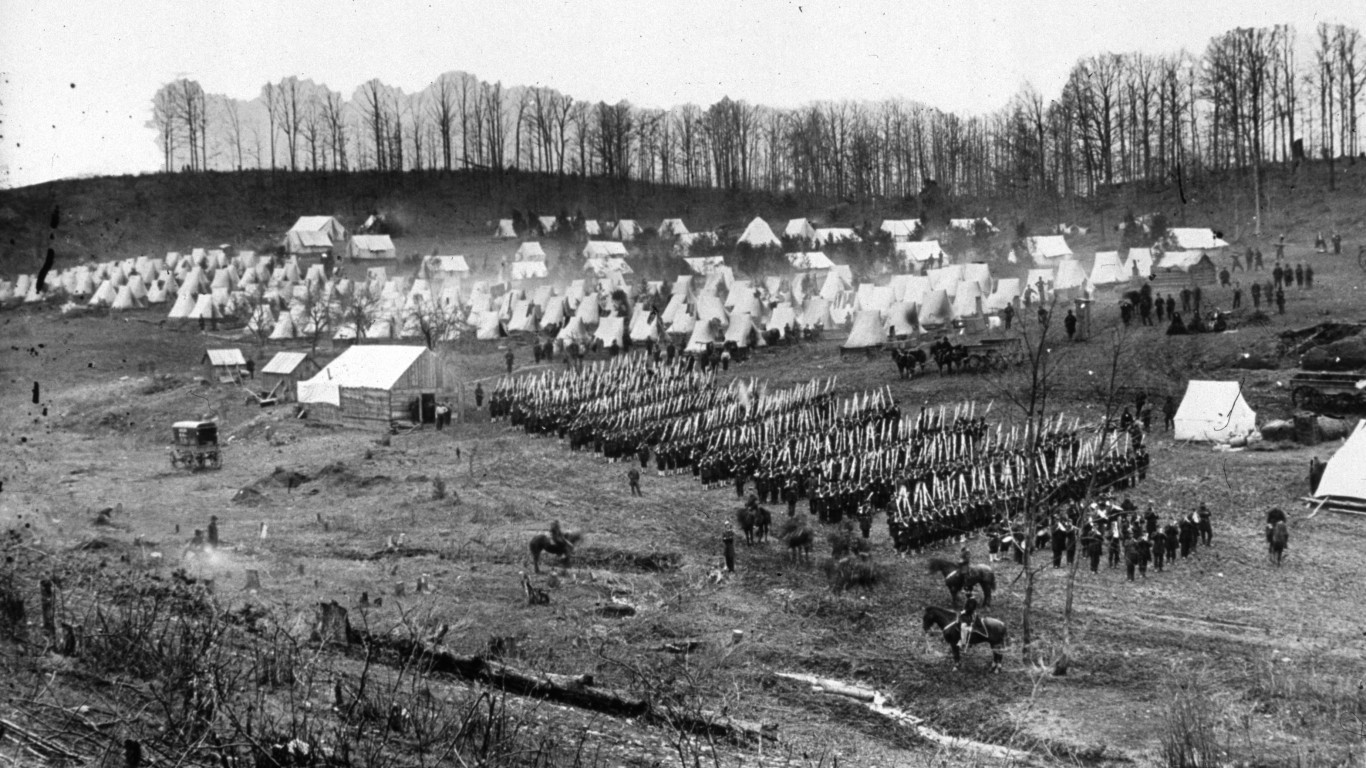 24/7 Wall St.
24/7 Wall St.